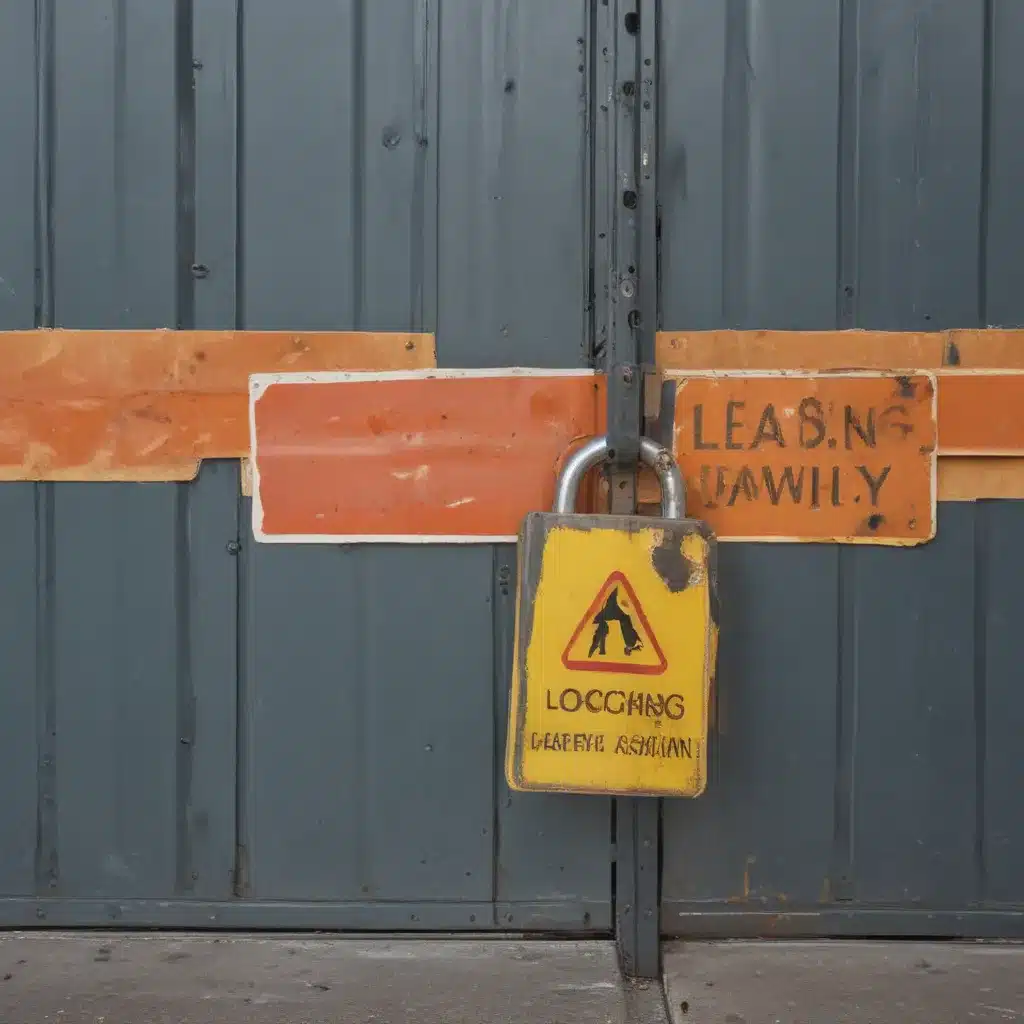Avoiding the Danger Zone
As the owner of Home Curtains Philadelphia, I’ve seen my fair share of potential hazards lurking in the workplace. From tangled cords to stray screws, the window treatment industry is no stranger to safety risks. But let me tell you, I’ve learned a thing or two about locking down those hazards and limiting my liability.
You see, it all started when one of my employees got a little too close to our industrial sewing machine. Suddenly, SNAP! – their sleeve got caught in the machinery. Cue the panic, the ambulance, the endless paperwork. It was a nightmare, let me tell you. That’s when I knew I had to get serious about safety.
Mastering the Lockout/Tagout
The key to keeping my employees (and myself) out of harm’s way? Lockout/tagout. Now, I know what you’re thinking – “Lockout/tagout? That sounds like a job for the safety police.” But trust me, it’s a game-changer when it comes to controlling hazardous energy.
According to OSHA, lockout is the “placement of a lockout device on an energy-isolating device in accordance with an established procedure.” Basically, it’s a way to physically lock down a machine or piece of equipment so that it can’t be turned on and put someone in danger.
And the tagout? That’s the process of attaching a standardized label or indicator to let everyone know that the equipment is off-limits. It’s like putting a big “DO NOT TOUCH” sign on a rigged system. Together, lockout/tagout forms a dynamic duo that keeps those hazards at bay.
Putting It into Practice
Now, implementing a lockout/tagout program might sound like a daunting task, but trust me, it’s worth the effort. The Canadian Centre for Occupational Health and Safety lays out the step-by-step process pretty clearly:
- Prepare for Shutdown: Identify the equipment that needs to be locked out, locate the energy sources, and gather the necessary lockout devices.
- Notify Affected Personnel: Let everyone know what’s going down and when it’s happening. Communication is key to keeping your team safe.
- Equipment Shutdown: Follow the manufacturer’s instructions to properly shut down the machine or system.
- Isolation of Energy Sources: Lock out those energy sources, whether it’s a circuit breaker, a valve, or a disconnect switch.
- Dissipation of Residual Energy: Get rid of any leftover energy that could still pose a threat.
- Lockout/Tagout: Attach your locks and tags, and make sure they can’t be removed by anyone but the authorized person.
- Verification of Isolation: Double-check that the equipment is truly locked out and can’t be restarted.
- Perform Maintenance or Service: Now you can get to work without worrying about those pesky hazards.
- Removal of Lockout/Tagout Devices: When the job is done, carefully remove the locks and tags, following the proper procedure.
Sounds like a lot of steps, I know. But trust me, once you get the hang of it, lockout/tagout becomes second nature. And the peace of mind it provides? Priceless.
Staying Compliant and Keeping Liability at Bay
Of course, as a business owner, I can’t just stop at implementing a solid lockout/tagout program. The Federal Motor Carrier Safety Administration reminds me that I also need to stay on top of all the other hazardous materials regulations.
That means proper labeling, placarding, and shipping paper requirements for any hazardous goods I’m transporting. It also means making sure my employees are properly trained to handle these materials. And let’s not forget about those hefty fines for non-compliance – yikes!
But you know what they say, an ounce of prevention is worth a pound of cure. By staying on top of all these regulations, I’m not only keeping my team safe, but I’m also shielding my business from costly lawsuits and penalties. It’s a win-win situation, if you ask me.
Cultivating a Culture of Safety
At the end of the day, locking down hazards and limiting liability isn’t just about following the rules. It’s about creating a workplace culture where safety is the top priority. And let me tell you, it’s not always easy.
I remember one time, I caught one of my employees taking a shortcut around the lockout/tagout process. They thought they were saving time, but all they were doing was putting themselves and the whole team at risk. Needless to say, we had a long talk about the importance of following safety protocols to the letter.
But you know what? Once my team saw how seriously I was taking this, they started to get on board. They realized that these safety measures weren’t just a hassle, but a way to protect themselves and the business. And let me tell you, there’s nothing more rewarding than seeing your employees take ownership of safety.
Now, our lockout/tagout program is a well-oiled machine, and my team knows that I’ve got their back when it comes to staying out of harm’s way. We’re a tight-knit group, and we’re all committed to keeping each other safe. And you know what they say, “united we stand, divided we fall” – or in this case, divided we end up in the ER.
So, if you’re a fellow window treatment business owner, take it from me: locking down those hazards and limiting your liability is a no-brainer. It might take some work upfront, but trust me, the peace of mind and the protection it provides is worth its weight in gold. Now, if you’ll excuse me, I’m off to make sure our lockout/tagout supplies are fully stocked – can’t be too careful, you know!



